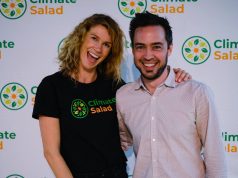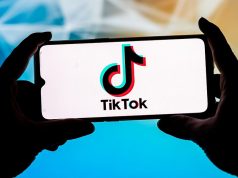 It’s a warm Tuesday night in December, and in the inner-Sydney suburb of Ultimo around 120 of
It’s a warm Tuesday night in December, and in the inner-Sydney suburb of Ultimo around 120 of
Within 60 seconds of walking in (about half an hour late) I’ve been seconded into one of six groups taking part in a session called Half-baked. It’s a great idea – a fictitious company name is assigned to each group, whose task then is to determine what the company does, what its elevator pitch is, what its marketing plan will be, and what its revenue model looks like.
My group is given the company name MidgetGame. Several somewhat politically-incorrect ideas are thrown around before the idea begins to coalesce – a ‘midget’ in this case is a mobile software widget – for our purposes a mobile representation of the user, which can be used to play various games on a mobile phone.
The tag line? Something along the lines of a Mobile Mini-Me. The marketing plan? Word of mouth, as players sign up their friends so they can battle each other in multi-player games. And the revenue model? Most likely a subscription model.
Within about five minutes the basis of the company is down on paper, and we’re ready to present.
In the end, MidgetGame came second to ShoeWave – some kind of online marketplace for trading the solo socks that inevitably find a home in your underwear drawer. Mind you, the ShoeWave team featured among its members Mike Cannon-Brookes, one of the founders of the internet software company Atlassian, who was recently named Entrepreneur of the Year by Ernst & Young.
After the completion of the Half-baked session, four companies – Remember The Milk, Quotify, Studentface and bluepulse – were invited to get up and give a one minute pitch of their business to an audience of fellow entrepreneurs, investors and high net-worth individuals. Each of the attendees was handed fake VC money (emblazoned with the face of the Podcast Network’s co-founder Cameron Reilly), which they could invest in the company of their choosing. The company that scored the greatest investment – Remember The Milk – took home a $5,000 subscription to the Microsoft Developer Network.
Many of the people at STIRR class themselves as web 2.0 – a difficult term to define that has become the catch-all for a bunch of internet-based business models that rely just as heavily on new web tools and technologies as they do on understanding the psychology of their users. Some are media oriented, some lean towards commerce, some improve productivity and others are mostly social in their function, but they all push the boundaries of what has been possible online before.
The idea of bringing STIRR to
Knowing that Australians are chronically bad networkers, the Half-baked idea was introduced to get people who didn’t know each other talking early on. The overall goal is to gather a large number of people to learn and get excited about what each other are doing in a fairly light-hearted but beneficial way.
There are literally dozens of these events on in the
What STIRR Sydney (and hopefully the other events to follow) proved is that internet entrepreneurship is alive and well in
Brad Howarth is a journalist and the author of ‘Innovation and the Emerging Markets: Where the Next Bulls Will Run’, a study on the challenges facing small Australian technology companies.
You can read his blog at lagrangepoint.typepad.com





![Four Page Digital Marketing Strategy [FREE RESOURCE]](https://anthillonline.com/wp-content/uploads/2015/01/FOUR-PAGE-IMAGE-300x194.png)
![THE ULTIMATE CASHFLOW CHECKLIST [FREE DOWNLOAD]](https://anthillonline.com/wp-content/uploads/2016/06/james-Seven-simple-strategies-to-cut-costs-04.pdf-Box-2016-06-30-13-49-35-100x75.png)
![The Top 5 Most Insanely Dumb Mistakes made by Rookie and Seasoned LinkedIn Users, with David Hobson [FREE REPORT]](https://anthillonline.com/wp-content/uploads/2015/07/Screen-Shot-2015-11-26-at-14.29.18-100x75.png)

![How Master the Art of Sales Even if it Makes You Feel All Weird and Icky Inside with Phil Anderson [CHEAT SHEET]](https://anthillonline.com/wp-content/uploads/2015/08/PHIL-ANDERSON-COVER-100x75.png)
![This Australian is headed to Mars. She explains what it really means to ‘go off the grid’ [VIDEO]](https://anthillonline.com/wp-content/uploads/2014/09/Dianne-McGrath-300x350.jpg)

![LEGO can make anything better, even Christmas [VIDEO]](https://anthillonline.com/wp-content/uploads/2014/12/LegoChristmas-300x350.jpg)
![It’s 2013. Where’s my flying car? Oh. There it is … [VIDEO]](https://anthillonline.com/wp-content/uploads/2013/05/TFX-300x350.jpg)
![Ever considered crowdfunding? [FREE REPORT]](https://anthillonline.com/wp-content/uploads/2017/03/liz-wald-300x194.png)
![Four principles to creating dedicated customers…or zombie loyalists with Peter Shankman [Free report]](https://anthillonline.com/wp-content/uploads/2015/11/Screen-Shot-2015-11-26-at-11.16.26-100x75.png)
![How to secure lucrative sponsorships in five steps [CHEAT SHEET]](https://anthillonline.com/wp-content/uploads/2016/02/jackie-fast-meme-04-100x75.jpg)
![Learn how to generate more leads in one month than most competitors would in one year! [FREE REPORT]](https://anthillonline.com/wp-content/uploads/2015/08/Capture4-100x75.jpg)
![New Zealand’s Xero eyes US IPO, further disruption as subscribers increase [INFOGRAPHIC]](https://anthillonline.com/wp-content/uploads/2014/07/sruuuuujana-212x194.png)
![Ever wonder if your ‘content marketing’ is really just crap? You gotta see this! [INFOGRAPHIC]](https://anthillonline.com/wp-content/uploads/2014/08/content-100x75.jpg)
![7 Business Lessons From Game of Thrones [INFOGRAPHIC]](https://anthillonline.com/wp-content/uploads/2014/10/infographic-games-of-thrones-041-100x75.jpg)
![How to build your own Media Empire… In seven steps with Nathan Chan [INFOGRAPHIC]](https://anthillonline.com/wp-content/uploads/2014/10/Nathan-Chan-Infographic-e1413419529176-100x75.jpg)
![5 Business Lessons From Tinder [INFOGRAPHIC]](https://anthillonline.com/wp-content/uploads/2014/10/Tinder-Elegant-Infographic-100x75.jpg)



